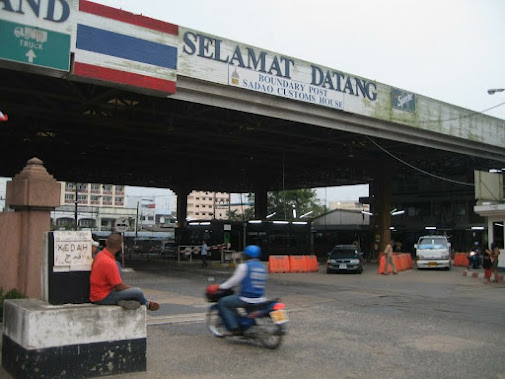New labour law causes panic but many expect to return with valid documents
Several
tens of thousands of Cambodian and Myanmar migrant workers have left
Thailand from various border checkpoints in a bid to obtain proper
document in their home towns before re-entering the country for work.
In the Thai province of Sa Kaew, several thousand Cambodians sought to
return home to apply for passports so that they could come back to work
here legally as required by the new Thai foreign labour law. The
stricter law has prompted some employers to stop hiring illegal
migrants.
According to the new foreign labour law, employers of
illegal migrants could face a hefty fine of Bt400,000-Bt800,000 per
migrant worker if found to have violated the law. The government said
enforcement of the law will be suspended for a 120-day period, starting
June 23, to allow time for all parties concerned to comply with new
requirements.
Pol Colonel Benjapol Rodsawad, the Sa Kaew immigration chief, said
Cambodian migrant workers voluntarily turned themselves in at the border
checkpoint to be handed over to Cambodian authorities. Some Cambodians
said their previous employers wanted them to leave due to the hefty
penalties under the new law, while many said they wanted to apply for
Cambodian passports so that they could return to work here legally.
On June 28-29, immigration authorities also reported that a total of
546 Cambodians were detained for illegal entry into Thailand, including
those detained by immigration offices in Saraburi, Ayuthaya, Samut
Prakan and Pattani provinces.
Under the new foreign labour law, migrant workers are also subject to
heavy penalties, including a fine of Bt2,000-Bt100,000 per person and/or
imprisonment of up to five years, if arrested by Thai authorities for
working here without proper permits.
Myanmar authorities in
Myawaddy province opposite Thailand’s Mae Sot district of Tak province
have opened a temporary facility to accommodate more than 10,000
returnees from Thailand at the border crossing.
Returnees are
also offered food and shelter as they prepare to travel back to their
hometowns. At least, 8,491 Myanmar workers are reported to have left
Thailand over the past few days, while Myanmar authorities said they
welcome returnees and no legal action would be taken.
Pol Colonel
Passakorn Kwanwan, the Mae Sot police chief, said the Thai police would
face disciplinary and other actions if they demand bribes from
returnees.
However, business operators in Mae Sot have complained
of labour shortage resulting from heavy penalties under the new law
since about 90 per cent of workers in the area are illegal migrant
workers.
Chaiwat Withit-thammawong, an adviser of Tak province’s
chamber of commerce, said the new law is good for Thailand in the long
run in terms of tackling problems resulting from a large number of
illegal migrant workers in the country.
The next step is to
require employers and migrant workers to register properly but the
government has to ensure that the process is fast and convenient while
expenses are not high, Chaiwat said.
The fisheries industry also reported a severe shortage of labour due to enforcement of the new law.
Meanwhile, two Myanmar workers were injured when a bus taking them from
Mae Sot to Samut Sakhon province veered off the road in Angthong
province early Saturday.
The accident happened at 4am on the
Bangkok-bound Asia highway in Moo 3, Tambon Lakfah, in the province’s
Chaiyo district, said Pol-Lieutenant Chatchai Chaiya of Chaiyo police
station.
The bus driver, Pinchai Thongsakul, 47, admitted that he
had dozed off, causing the bus to veer off for about 100 metres. A
Myanmar man suffered from back pain and a pregnant Myanmar woman
suffered from vaginal bleeding. The two were rushed to the Chaiyo
district hospital.
Pinchai said he had taken 26 Myanmar men and
22 women by bus from Samut Sakhon to renew their passport across the Mae
Sot border and he was returning with them to Samut Sakhon when the
accident happened.
Meanwhile in Tak, three police officers were
removed from their posts and assigned guard duty at Mae Sot Police
Station, after a video clip showed them asking for bribes from Myanmar
migrant workers.
Pol-Colonel Passakorn Klanwan, Mae Sot Police
superintendent, revealed that the committee to investigate this issue
has already been set up and if these three police officers are found
guilty, there will be swift punishment according to the law.
Source - TheNation


























